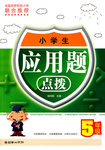题目内容
Come to see me whenever _________.
A. you are convenient B. you will be convenient
C. it is convenient to you D. it will be convenient to you
C

练习册系列答案
 精英口算卡系列答案
精英口算卡系列答案 应用题点拨系列答案
应用题点拨系列答案 状元及第系列答案
状元及第系列答案
相关题目
题目内容
Come to see me whenever _________.
A. you are convenient B. you will be convenient
C. it is convenient to you D. it will be convenient to you
C

 精英口算卡系列答案
精英口算卡系列答案 应用题点拨系列答案
应用题点拨系列答案 状元及第系列答案
状元及第系列答案